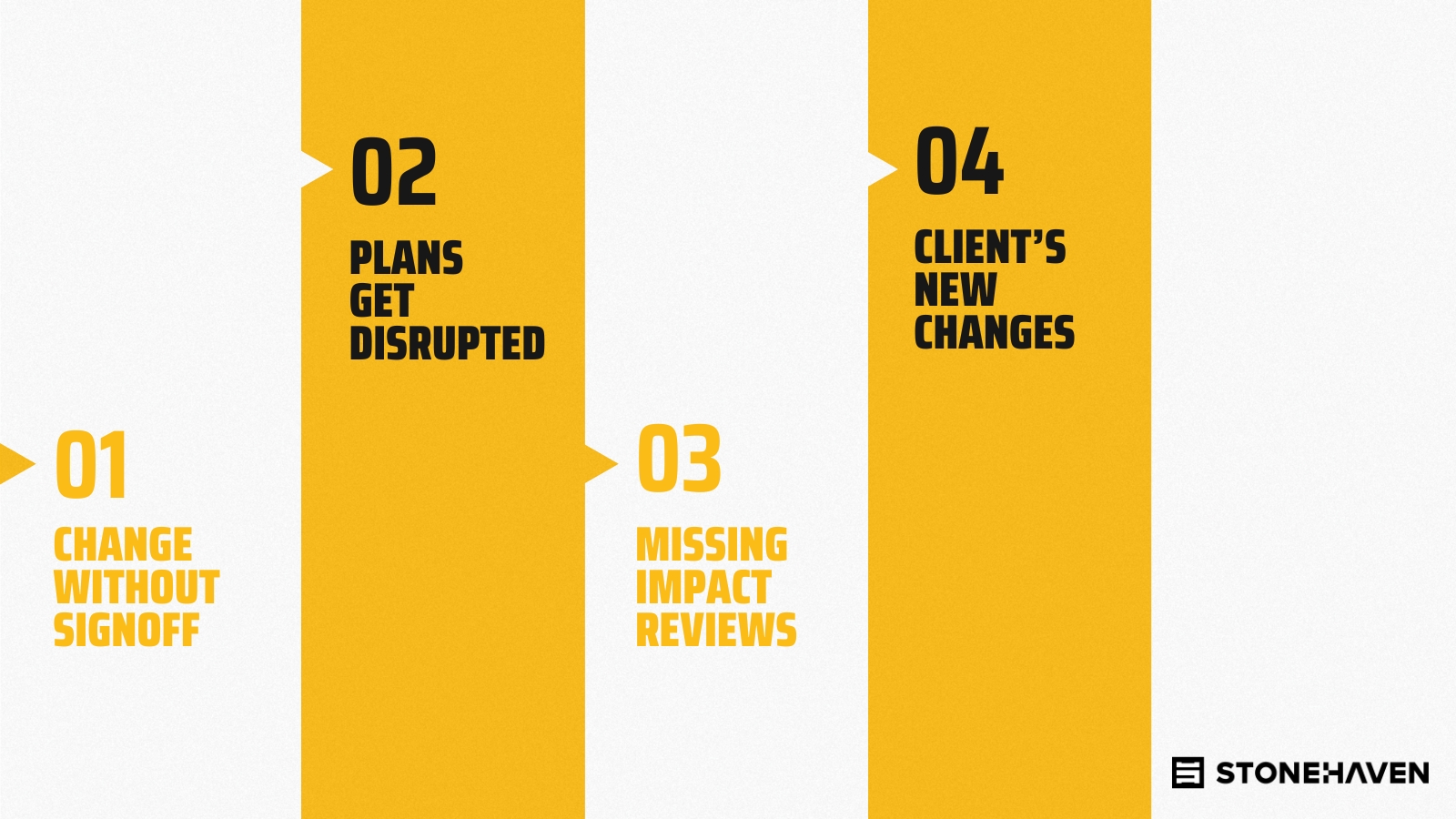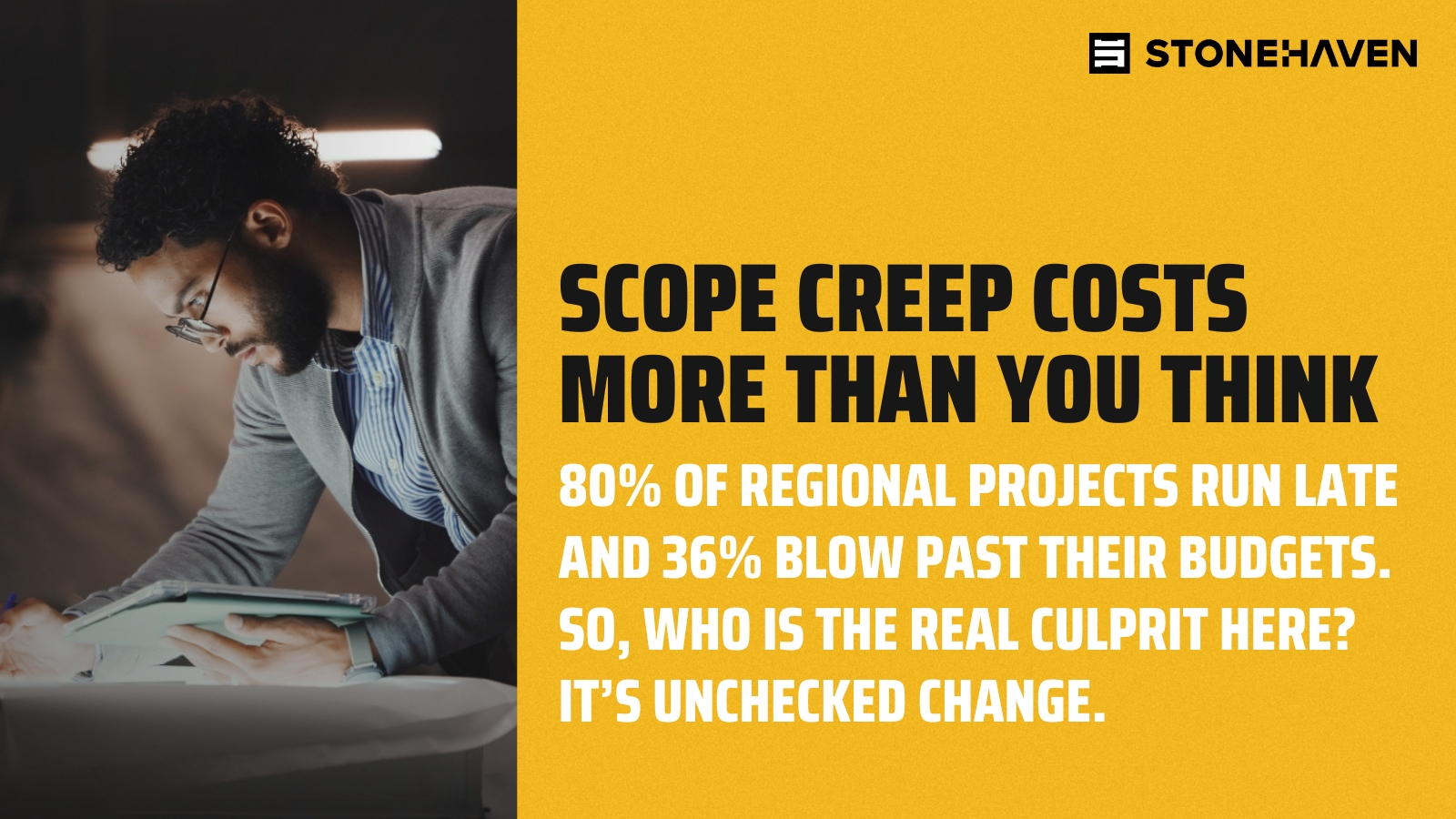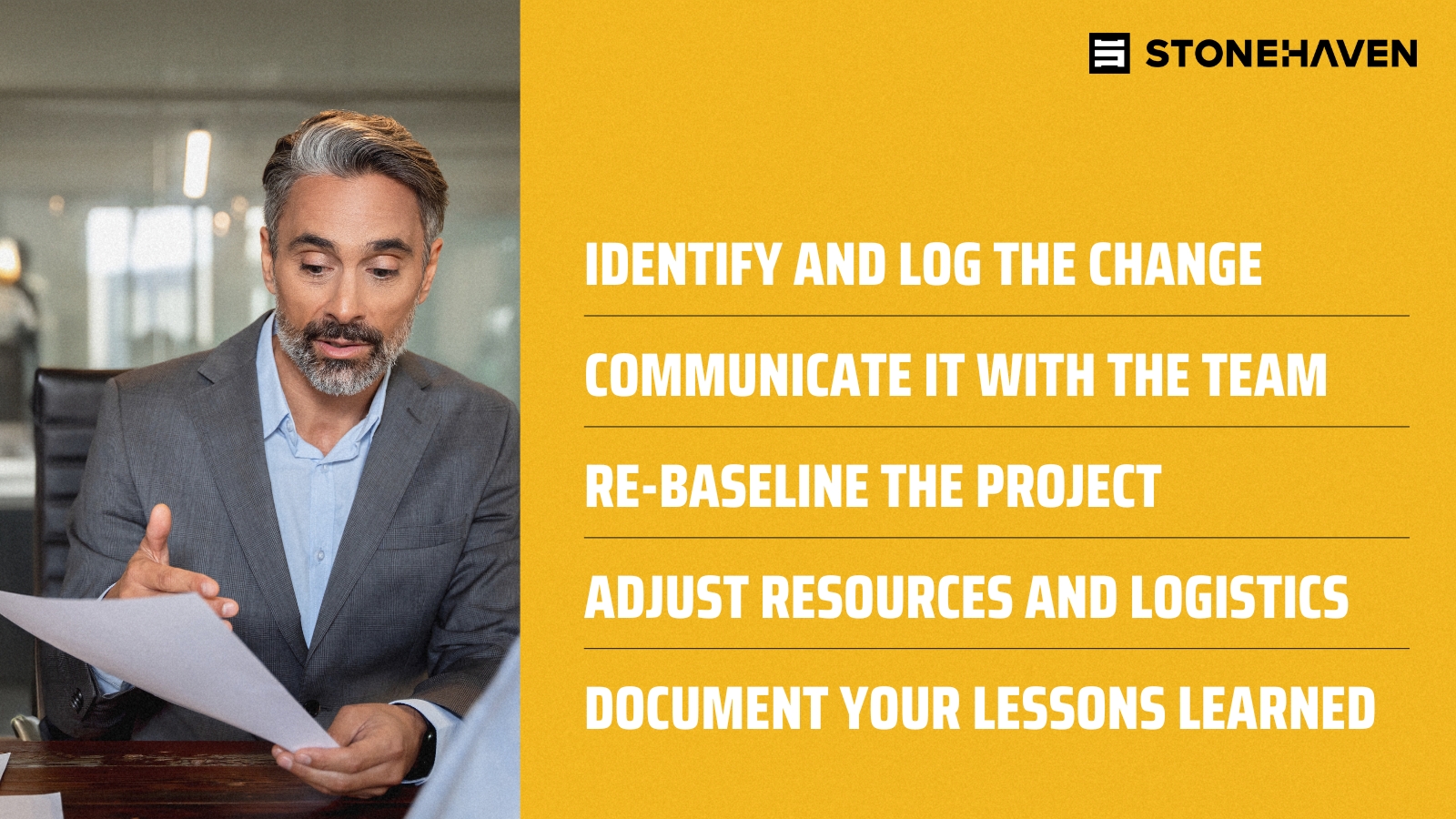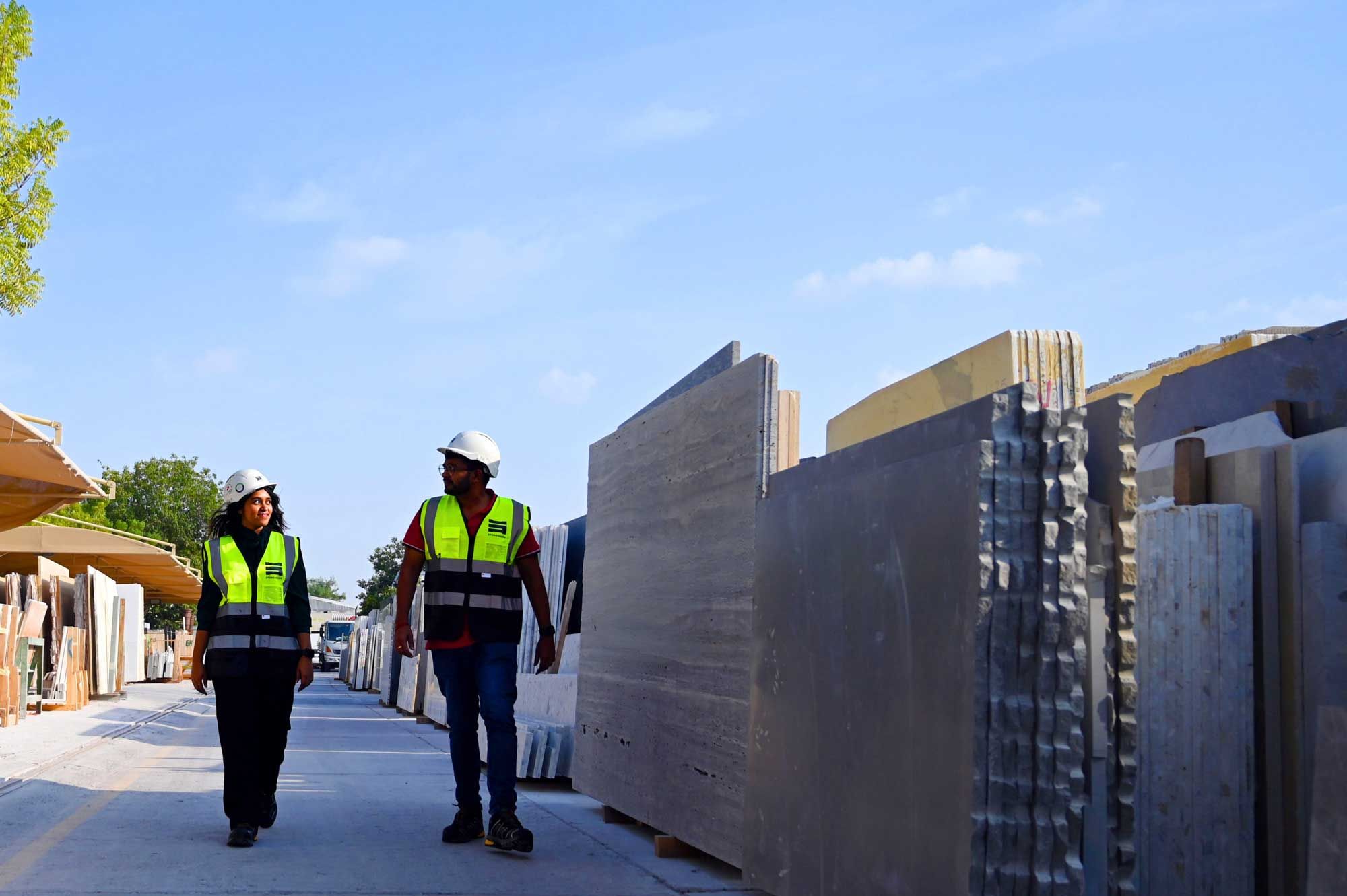In the world of construction project management, scope creep can feel like a slow-moving storm, quietly gathering momentum until the project’s timeline, budget, and integrity begin to falter. It often begins subtly: an afterthought to enhance the facade, an extra floor for prestige, or a fancy lobby feature that everyone seems to agree on. Yet before long, these additions inflate the project’s demands, stretching resources and jeopardising success.
Scope creep is the uncontrolled expansion of a project’s original scope without formal approval or consideration of impact, leading to cost overruns, schedule delays, and strained team morale. Within construction, even small tweaks; changing specifications, adding finishes, can ripple through budgets, labour planning, material orders, compliance requirements, and long‑term maintenance expectations.
This introduction sets the stage for deeper exploration. What characterises scope creep in construction? Why does it happen? How can we stop it in its tracks, or better yet, prevent it? In this blog, we’ll peel back the layers, share real‑world examples, and deliver practical, story‑driven strategies for avoiding scope creep. This guide empowers project managers to stay on track, and in control, so every build goes off without a hitch.
What best describes scope creep in construction project management?
Amid a booming AED 190 billion construction market in the UAE, even small late-stage changes carry outsized risks. Scope creep in construction project management refers to the uncontrolled or unapproved expansion of a project's scope after work has commenced. This typically involves changes or additions that were not part of the original project brief, often made without a corresponding adjustment to timeframes, budgets, or resource allocations.
With regional projects running 80 % behind schedule and 36 % over cost, predominantly due to scope changes, it’s clear that unchecked adjustments are a major disruptor. In the UAE, design modifications, client-driven feature additions, and permitting delays are consistently flagged in studies as primary causes of overruns.

A common example might involve a client requesting a rooftop terrace halfway through a high-rise development, without reassessing the building’s structural capacity, project timeline, or budgetary implications. While the intention may be positive, the consequences can be significant, this is scope creep in action.
Core characteristics of scope creep include:
- Unofficial changes post-contract: These are modifications introduced after the scope has been agreed upon, but without going through a formal change control process.
- Disruption of project constraints: A seemingly small change, such as switching to a high-end finish, can cascade into material sourcing delays, increased labour demands, and cost escalations.
- Lack of formal approvals or impact analysis: When changes bypass architectural, structural, or regulatory review, their broader implications, particularly around compliance and safety, are often underestimated.
- Stakeholder-driven enhancements: Enthusiastic suggestions from clients or stakeholders, such as larger windows, additional storeys, or premium landscaping, may seem minor individually but collectively lead to budget overruns and missed deadlines.
Adding features after approval without due controls inevitably ramps up time, cost, and resource strains. In construction, this might take the form of post-procurement changes, such as upgrading fixtures, altering layouts, or requesting new features mid-build.
In the UAE’s fast-track projects, scope creep often arises not just from design changes, but from misaligned contract clauses under FIDIC or post-tender value engineering requests that bypass formal re-approval.
In essence, scope creep is unauthorised scope expansion that disrupts key project constraints, time, cost, quality, and compliance. Recognising and managing it early is essential to maintaining control over construction delivery.
What Are the Common Causes of Scope Creep in Construction?
Effectively mitigating scope creep begins with a clear understanding of its root causes. In construction project management, several recurring factors contribute to unplanned and uncontrolled changes in scope:
Inadequately Defined Project Scope
When project deliverables, boundaries, assumptions, and exclusions are not clearly articulated, particularly within technical documentation, ambiguity arises. This allows stakeholders to request additions under the assumption that these elements were always intended. According to industry literature, incomplete requirement capture and ineffective communication are among the leading contributors to scope creep.
Evolving Client Expectations
Clients frequently revise their vision during the course of a project, requesting upgrades such as premium materials, additional features, or design changes. When these revisions are not processed through a formal change control mechanism, they accumulate informally, often leading to significant delays and cost increases.
Lack of Robust Change Control Processes
The absence of structured procedures for handling change, such as formal request documentation, impact assessments, cost and timeline adjustments, and decision-making authority, can result in unmanaged scope expansion. Construction projects benefit significantly from a formalised Change Control Board (CCB) to evaluate and approve all proposed modifications.
Unclear Design Modifications
Design freeze dates are often missed or loosely enforced, leading to continued design evolution deep into construction, triggering both rework and scope confusion.
Inaccurate Resource and Schedule Planning
Overly optimistic timelines, understaffing, reliance on single suppliers, or insufficient contingency planning can create vulnerabilities. Under these pressures, additional requests, such as feature upgrades, may be approved hastily, under the assumption that there is “room” in the schedule, only to later overwhelm resources or budgets.
Ineffective Communication Across Teams
Miscommunication between stakeholders, architects, contractors, project managers, and clients, often leads to unverified assumptions, scope gaps, and unrecorded decisions. These breakdowns contribute directly to unintended changes during execution.
Feature Creep or ‘Gold Plating’
At times, project teams may go beyond the agreed scope by adding enhancements or high-end finishes to impress the client. While well-intentioned, such actions violate scope agreements and can create misaligned expectations or future legal complications.
External and Regulatory Factors
Unforeseen developments such as changes in building codes, supplier disruptions, or evolving site conditions may necessitate legitimate adjustments. However, if not formally processed, these too can result in uncontrolled scope shifts.
In essence, scope creep stems from poorly managed expectations, insufficient documentation, and weak governance processes. Proactively addressing these areas is critical to maintaining project control and delivering on time and within budget.
How Can Scope Creep Be Prevented in Construction?
Preventing scope creep in construction is not about resisting change altogether, it's about managing change in a structured, transparent, and disciplined manner. While construction projects inevitably evolve over time, the key to avoiding costly deviations lies in proactive governance, clear communication, and strong project controls.

1. Clearly Define and Document the Scope
A comprehensive and unambiguous project scope is the first line of defence. Prior to mobilisation, ensure the scope statement, project plan, and contract documents specify all inclusions, exclusions, and conditions. Detailed documentation of materials, quantities, finishes, and tolerances helps eliminate assumptions and sets clear boundaries for all stakeholders.
2. Inform Clients from the Outset
Clients may not fully grasp the downstream implications of seemingly minor changes. A pre-construction briefing or onboarding session can outline how even small design modifications, such as changing a flooring material can disrupt procurement, delay installations, and affect systems integration. Early education establishes realistic expectations and reduces the risk of ad hoc requests.
3. Establish a Formal Change Control Process
Every project should adhere to a structured change management workflow:
● Identify and document the proposed change
● Assess the impact on cost, schedule, compliance, and resources
● Submit for review by the project board or designated authority
● Approve or reject based on a risk-informed decision
● Only implement changes that have been formally approved
This process should be non-negotiable and consistently applied.
4. Use Milestones and Project Checkpoints
Scope deviations often go unnoticed until they result in delays or overspends. Schedule regular milestone reviews and site inspections to compare actual progress with original scope. Early detection of misalignment allows timely correction and limits cascading effects.
5. Leverage Project Management Technology
Tools such as Procore, Buildertrend, and PlanGrid offer robust features including version control, live dashboards, change logs, and document repositories. These systems support real-time collaboration and ensure traceability of decisions, reducing ambiguity and manual oversight.
6. Prioritise Clear, Centralised Communication
Maintain consistent and transparent communication across all project stakeholders. Use official templates for change requests, confirm discussions in writing, and avoid verbal commitments that are not formally documented.
A minor-works contingency allowance (e.g. 3–5% of total value) can also help accommodate changes transparently, provided it's pre-approved and tracked against a variation register.
In summary, preventing scope creep requires foresight, structure, and accountability. When properly managed, change becomes a calculated evolution, not a disruptive surprise.
What are the Best practices to avoid scope creep?
1. Build a Bulletproof Scope Baseline
A strong scope baseline is your project’s anchor, it defines what will be delivered, when, and how. In construction, this baseline should be detailed and agreed upon before ground is broken. It typically includes architectural drawings, detailed specifications, approved site instructions, contractual obligations, and agreed-upon finishes and materials. All of this must be documented and signed off by key stakeholders including the client, consultants, contractors, and subcontractors.
Without a scope baseline, expectations are vague, and “small” changes can snowball. A contractor might think a layout change is minor, but without the baseline to refer to, it’s hard to contest. The baseline protects everyone, clients can trust they’ll receive what they paid for, and contractors are shielded from scope drift that drains resources. This scope should also be used to structure the WBS (Work Breakdown Structure), which breaks down deliverables into manageable units. Once it’s formalised, any deviation from it must go through a structured review process. Remember: a project without a clear baseline is like a building without a foundation, shaky from the start. The clearer the scope, the harder it is for creep to slip through the cracks.
2. Set Up a Change Control Division
Scope changes will happen, it’s inevitable. What matters is how you manage them. That’s where a Change Control Division becomes critical. This team acts as the gatekeeper of your project scope, reviewing every proposed change and deciding whether it’s necessary, feasible, and aligned with budget and timeline. Typically, the CCB includes the project manager, lead architect or engineer, a client representative, and someone from the finance team.
All change requests, whether to add a new feature, modify a material, or revise a layout, should be submitted in writing. The board then evaluates the request’s impact on cost, schedule, resources, and quality. Nothing proceeds without consensus. The CCB protects against impulsive decisions. A well-meaning site manager might approve a change to please the client, but if it bypasses the formal process, it could delay procurement or introduce cost overruns. A functioning CCB reinforces structure and clarity, ensuring scope changes enhance the project, not derail it.
3. Enforce Strict Documentation Protocols
In construction, verbal agreements and handshakes don’t hold up. Every change, no matter how small, must be captured in formal documentation. Without it, disputes are nearly guaranteed. Documentation protocols should include signed change orders, updated drawings and specifications, revised Bills of Quantities (BOQs), and updated work schedules. This creates a clear, traceable record of what changed, when, and why.
Failure to document leads to confusion. A contractor may claim additional work was approved on-site, while the client disputes that any instruction was given. With no signed paper trail, it becomes a matter of opinion. Documentation provides clarity, accountability, and legal backup.
Make it a site-wide culture: even subcontractors should be trained to log variation requests formally. Encourage the use of standardised forms and digital logs. Use cloud folders or project management software with role-based access so changes can be tracked and retrieved easily.
4. Leverage Project Management Software
Managing scope changes manually is a recipe for miscommunication. That’s why modern construction teams are turning to digital platforms to serve as a single source of truth. Tools like Procore, Autodesk Build, Primavera P6, or Fieldwire combine drawing management, change tracking, RFIs, site diaries, and document control into one interface. This consolidation means that everyone, from project managers to subcontractors, works off the same information in real time.
These tools provide version control, so outdated drawings don’t circulate on-site. They also allow automatic notifications when a change is approved, ensuring immediate visibility across departments. Project management platforms also integrate with mobile devices, allowing real-time updates on-site. Supervisors can upload annotated photos, flag inconsistencies, or sign off changes immediately. No more relying on emails or paper folders lost in transit.
The result? Faster decisions, fewer disputes, and a tighter grip on scope. Digital tools are no longer a luxury, they’re essential for projects that want to stay lean, informed, and in control.
5. Establish Communication Rituals
Even with baselines and tech in place, projects fail if communication is inconsistent. That’s why it’s essential to establish structured communication rituals that keep the entire team aligned. This means holding weekly scope alignment meetings, circulating updated drawings across all contractor teams, and reinforcing the golden rule: no site change proceeds without CCB approval.
These rituals aren’t just check-ins, they’re strategic resets. Weekly meetings help uncover hidden misalignments before they snowball. Procurement leads can confirm that long-lead items still align with the latest drawings. Engineers can flag constructability issues early. Admins can track whether change orders have been properly logged and approved.
Multi-channel communication is key. Use project dashboards for visibility, WhatsApp summaries for quick updates, and formal email digests to document critical decisions. Good rituals are predictable, inclusive, and adapted to the pace of the build.
For example, a Dubai-based contractor required every subcontractor to attend Monday morning briefings and issued a Friday wrap-up email outlining any approved changes. The result? Faster approvals, reduced errors, and a more cooperative site culture.

How Can a Project Manager Handle Scope Creep?
Despite proactive measures, scope creep can still infiltrate a project. When it does, the role of the project manager shifts from prevention to strategic response and recovery. Many undocumented changes surface during monthly interim valuations. Smart project managers ensure that these are flagged early through alignment between QS reports and site diaries.
Effective handling requires immediate recognition, transparent communication, and structured corrective action. Here’s how project managers can take control:
1. Promptly Identify and Log the Change
The first step is to acknowledge the deviation without delay. Document the change in full detail, comparing it against the original scope baseline. Key elements to log include:
● A description of the change
● The individual or team who initiated it
● Its projected impact on cost, schedule, and quality
● Any necessary approvals or pending decisions
Creating a detailed change log ensures accountability and provides a paper trail for decision-making.
2. Communicate Transparently with Stakeholders
Organise a meeting with all relevant stakeholders, client representatives, contractors, architects, and consultants. Present the change, its potential implications, and a proposed course of action. This fosters alignment and reinforces trust, even when difficult trade-offs are required.
3. Re-Baseline the Project
If the change is approved, update all core project documents: the scope baseline, budget, resource allocation, and delivery schedule. Clearly record the rationale behind the modification and the authorising parties. This prevents future disputes and confusion.
4. Adjust Resources and Logistics
Make necessary logistical changes to accommodate the new scope. This may involve reallocating labour, updating procurement orders, or scheduling additional work shifts. Timely execution is critical, any delay in response can create cascading disruptions across dependent activities.
5. Document Lessons Learned
Once the issue is resolved, conduct a root cause analysis to understand how the scope change arose. Was it due to vague documentation, stakeholder misalignment, or unclear requirements? Capture these insights in a lessons-learned register to inform future project planning and stakeholder engagement.
By taking swift, transparent, and structured action, project managers can transform scope creep from a disruptive threat into a controlled pivot. The goal is not merely to contain the deviation, but to realign the project with its strategic objectives, without compromising delivery, quality, or client trust.
Conclusion
Scope creep can quietly erode the foundation of even the best-planned construction project. It doesn’t always roar in, it seeps through cracks in communication, documentation, and accountability. But with discipline, structure, and the right tech stack, construction professionals can spot it, stop it, and manage it with confidence.
From clearly defining scope and setting client expectations to enforcing change control and arming yourself with smart PM tools, the roadmap to preventing scope creep is clear. And when prevention fails, having a calm, well-documented response plan can mean the difference between recovery and catastrophe.
In today’s high-stakes construction market, especially across complex, large-scale projects in the Middle East, handling scope creep isn’t optional. It’s a defining skill of successful project managers.
About Us
At Stonehaven, we help you build smarter, without compromising your scope, budget, or deadlines. As one of the UAE’s leading construction project management consultancies, we specialise in delivering complex, high-value builds with precision and clarity. Our team brings together certified project managers, construction engineers, planners, and digital transformation experts who are committed to driving large-scale developments forward, on time and on budget. Whether you’re launching a luxury high-rise, upgrading critical infrastructure, or completing a high-spec commercial fit-out, we tailor global best practices to the local context.
At Stonehaven, scope management is not an afterthought, it’s our foundation. We combine robust change control systems, predictive risk mitigation strategies, and integrated planning tools to ensure that every aspect of your project stays aligned with your approved vision. Our systems provide granular change impact analytics, helping you make informed decisions before approving any variation. With in-house expertise in contract administration and regulatory frameworks, we offer end-to-end advisory that protects your project from both scope creep and costly delays.
We don’t just manage projects, we build trust, structure, and results.

















